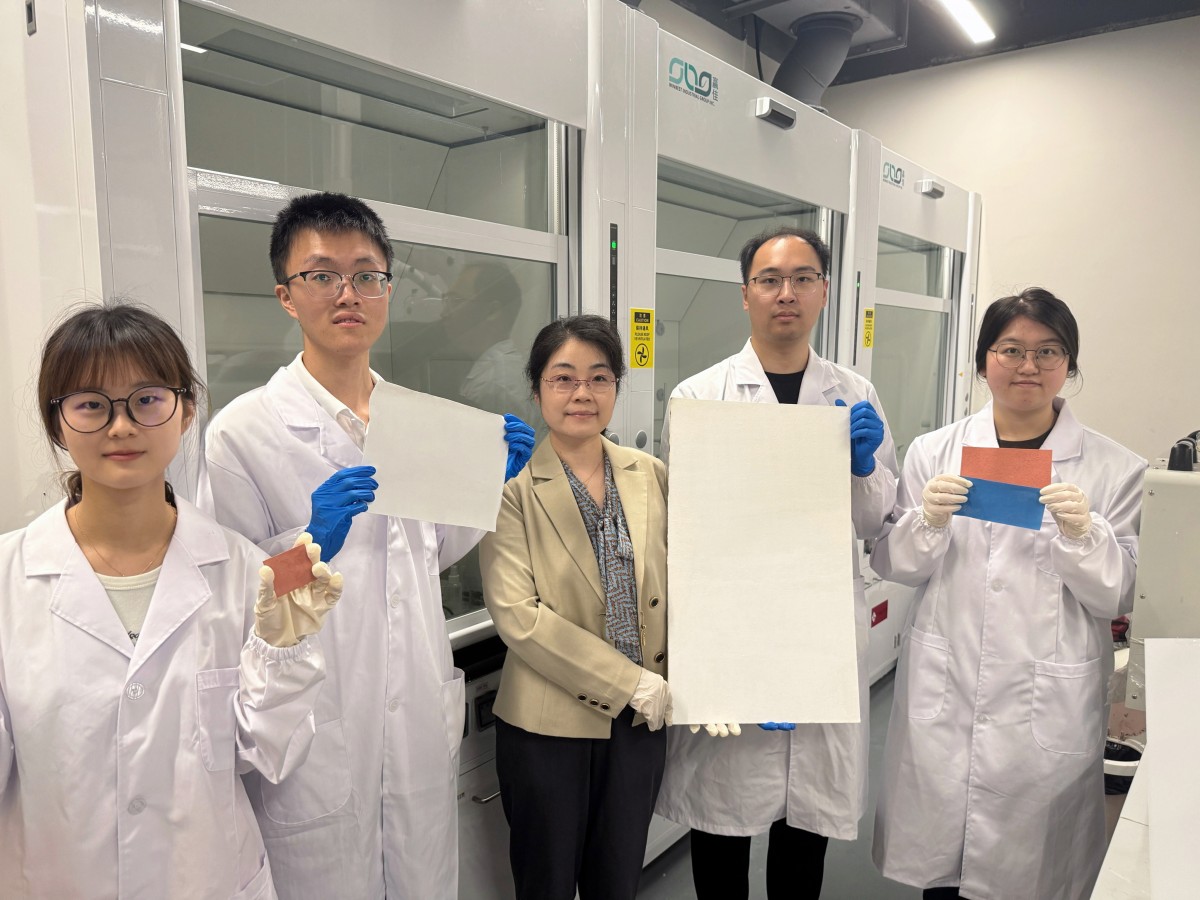A research team led by Professors Zhiwen Shi and Qi Liang from the School of Physics and Astronomy at Shanghai Jiao Tong University (SJTU) have achieved a significant scientific milestone. In collaboration with their partners, the team published a research article in Science titled “Homochiral carbon nanotube van der Waals crystals.” The paper was released online ahead-of-print through Science’s First Release platform.
The study introduces a novel method for fabricating carbon nanotube arrays, marking the first successful direct growth of close-packed single-walled carbon nanotube (SWNT) arrays with both high alignment and uniform chirality. These arrays form a new type of carbon nanotube van der Waals (vdW) crystal structure and demonstrates the potential for high-performance field-effect transistor (FET) devices.
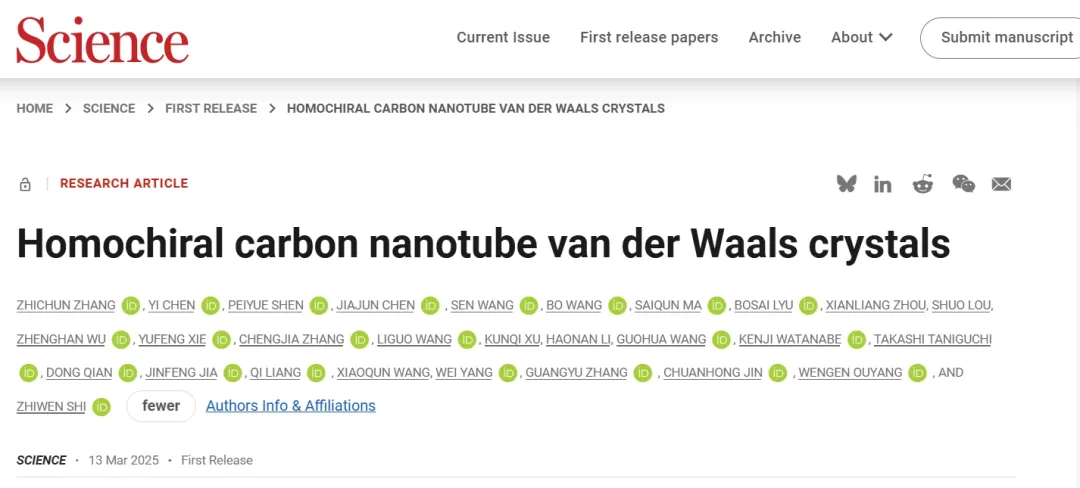
Figure 1. Screenshot of the published Science paper
Carbon nanotubes—discovered in 1991—belong to the start-studded family of carbon materials that includes diamond, graphene, and fullerenes. Structurally, they can be considered as one-dimensional tubes formed by rolling up graphene sheets. With a diameter of only about 1 nanometer, they are the thinnest known material. Their extraordinary electron mobility far exceeds that of traditional silicon, making them a leading candidate for the development of faster, smaller, and more energy-efficient electronics and potentially driving new developments in next-generation computer chips.
However, practical application in chips has long been held back by a fundamental challenge: inconsistency. Naturally grown carbon nanotubes tend to form with random chiralities—leading to a mix of metallic and semiconducting properties—roughly one-third metallic and two-thirds semiconducting. Moreover, their orientations are typically disordered, making it difficult to achieve the uniformity required for integration into high-performance circuits.
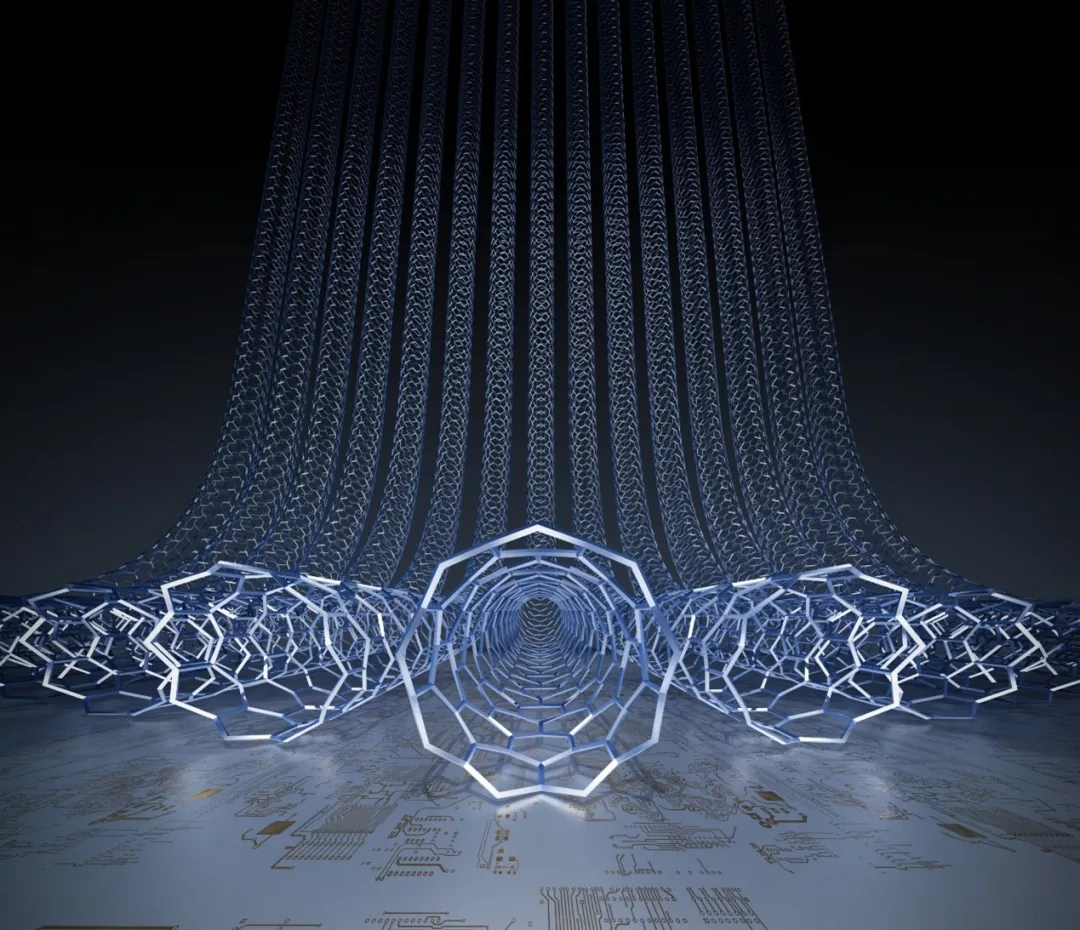
Figure 2. Schematic of the carbon nanotube van der Waals crystal structure
In 2001, Nobel Laureate Professor Richard E. Smalley identified a critical challenge and long-term goal in carbon nanotube research: to create a crystal composed entirely of carbon nanotubes with the same chirality, densely packed and precisely aligned. For more than two decades, this goal remained out of reach—until now.
To tackle this challenge, Professor Zhiwen Shi’s team at SJTU collaborated with Professor Wengen Ouyang’s team at Wuhan University, Professor Chuanhong Jin’s team at Zhejiang University, and Researcher Guangyu Zhang’s team at the Institute of Physics, Chinese Academy of Sciences. Together, they developed an innovative "sliding self-assembly growth" mechanism that enables the direct formation of homochiral, close-packed carbon nanotube arrays using atomically flat hexagonal boron nitride (hBN) substrates, successfully forming the first carbon nanotube van der Waals crystal.
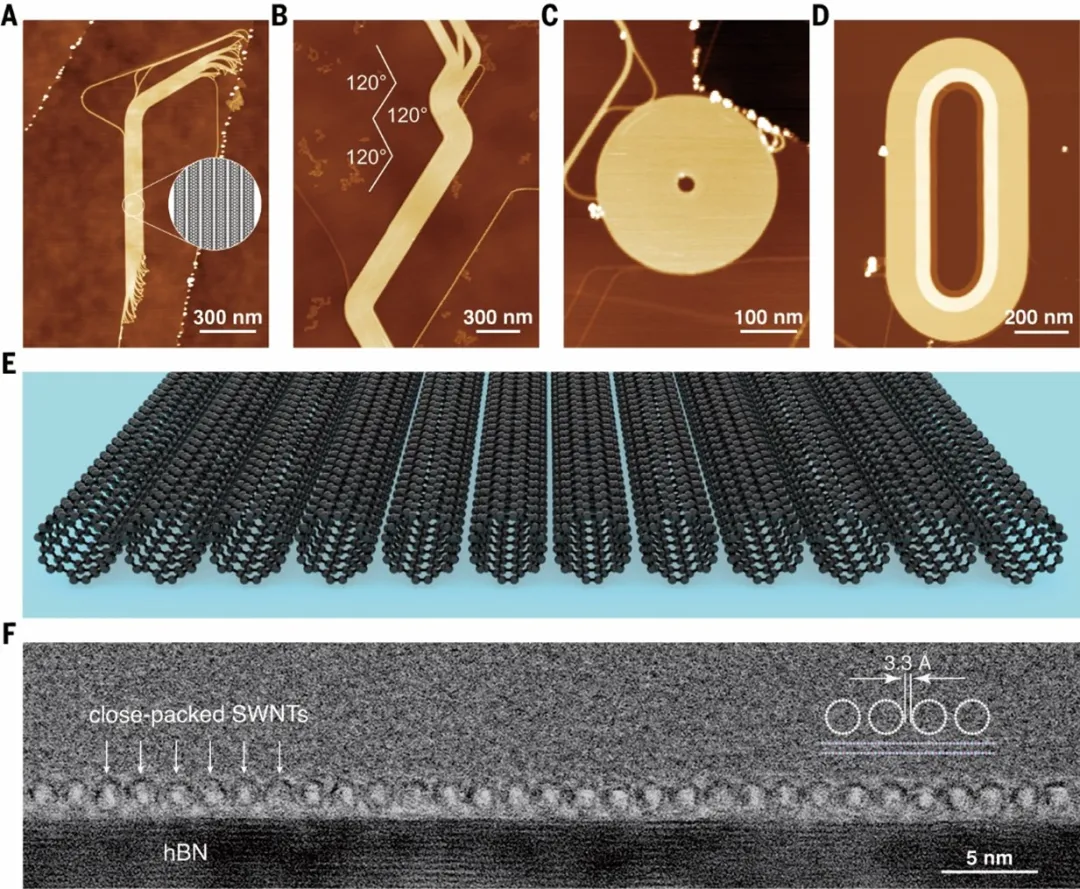
Figure 3. Homochiral and densely packed carbon nanotube arrays
These arrays were produced using nanoparticle-catalyzed chemical vapor deposition (CVD) growth techniques. Experimental observations confirmed that the arrays consisted entirely of carbon nanotubes with the same chirality—tightly packed, parallel, and spaced just 0.33 nm apart. Theoretical analysis revealed that this near-perfect structure arises from two key factors: the ultralow sliding friction between the carbon nanotubes and the hBN substrate, and the van der Waals interactions between the nanotubes themselves. These conditions allow the nanotubes to glide, reorient, and self-organize into stable lower-energy configurations—successfully forming a vdW crystal structure.
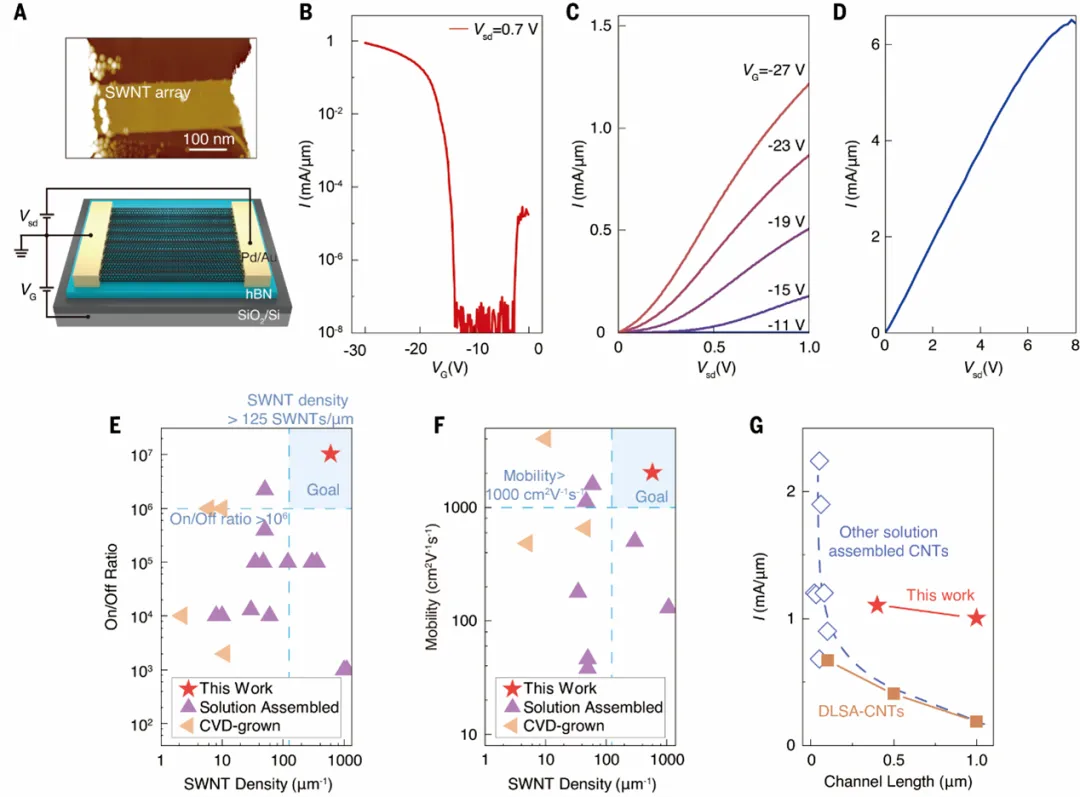
Figure 4. Excellent performance of the carbon nanotube array-based FET device
Thanks to their homochirality and precisely aligned, densely packed structure, the carbon nanotube array-based FETs demonstrated outstanding electrical performance. The devices achieved carrier mobilities approaching 2,000 cm²/V·s, current densities over 6.5 mA/μm, and on/off current ratios as high as 10⁷. These metrics not only surpass previously reported results but also outperform benchmarks outlined in upcoming generations of the silicon-based technology roadmap. Notably, the on-state current achieved by these devices far exceeds that of other carbon nanotube transistors fabricated with similar processing precision. These results underscore the tremendous potential of homochiral carbon nanotube arrays as a foundational material for high-performance, carbon-based nanoelectronic chips.
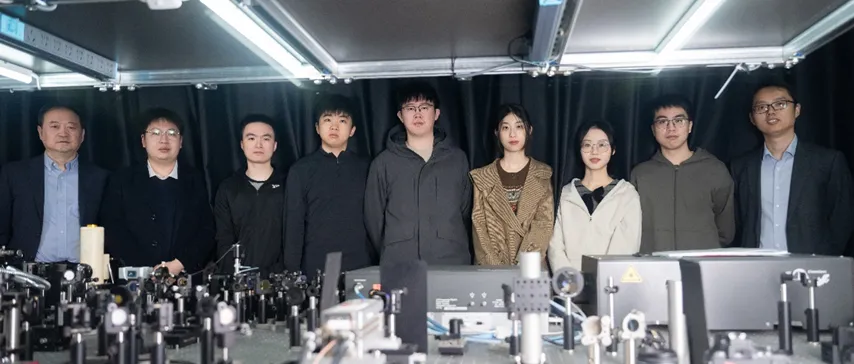
Figure 5. Members of the SJTU research team
(From left to right: Professor Qi Liang, Zhichun Zhang, Saiqun Ma, Liguo Wang, Jiajun Chen, Chengjia Zhang, Peiyue Shen, Yi Chen, Professor Zhiwen Shi)
The co–first authors of the paper are Zhichun Zhang, Yi Chen, Peiyue Shen, and Dr. Jiajun Chen from the School of Physics and Astronomy at Shanghai Jiao Tong University; Sen Wang from Wuhan University; and Dr. Bo Wang from Zhejiang University. The co–corresponding authors are Professor Zhiwen Shi, Professor Qi Liang, Dr. Jiajun Chen, Researcher Guangyu Zhang (Institute of Physics, Chinese Academy of Sciences), Professor Chuanhong Jin (Zhejiang University), and Professor Wengen Ouyang (Wuhan University).
Additional contributors include Professor Jinfeng Jia, Professor Dong Qian, Dr. Guohua Wang, Saiqun Ma, Xianliang Zhou, Shuo Lou, Zhenghan Wu, Yufeng Xie, Chengjia Zhang, Liguo Wang, Haonan Li, Dr. Kunqi Xu (all from SJTU), Professor Xiaoqiun Wang (Zhejiang University), Researcher Wei Yang (Institute of Physics, CAS), and Professors Kenji Watanabe and Takashi Taniguchi from the National Institute for Materials Science in Japan.
The project was made possible through support from the Ministry of Science and Technology and the National Natural Science Foundation of China, to whom the team expresses its sincere gratitude.
Link to the paper:
https://www.science.org/doi/10.1126/science.adu1756


